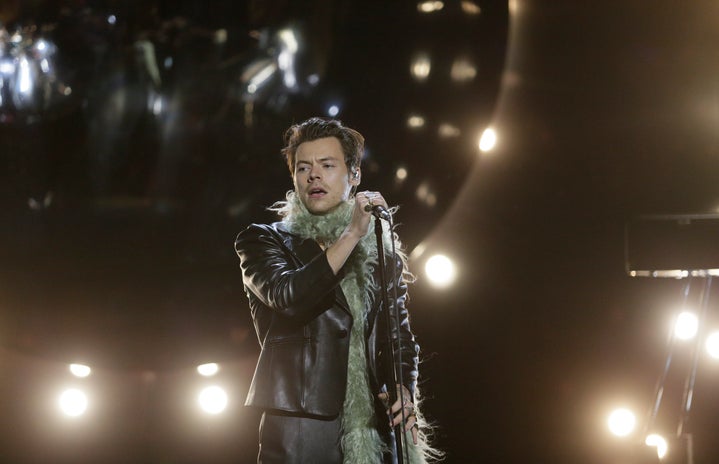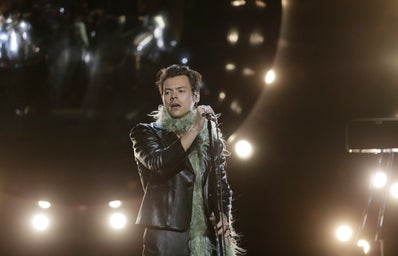Not only is GRAMMYs night the biggest night for music, it’s also the biggest night for me. I love watching the over–the–top performances, the industry’s top artists interacting, and the emotional acceptance speeches. Most of all, I live for determining whether the recording academy made the right decisions.
When the GRAMMYs decided to postpone their 63rd show due to the COVID–19 pandemic, I was disappointed. They moved the show from January 31st to March 14th, planning it around any and all COVID–19 restrictions. While many award shows this past year have made their ceremonies mainly virtual, the Grammy Awards were still held entirely in person—just without the presence of an audience.
The night had a unique feel. Not having a live audience felt unusual for viewers, and I imagine the performers and nominees as well. Trevor Noah, the host of the show, explained how the entire night would work in his opening speech. He started in the outdoor area, where there was a stage for acceptance speeches, as well as tables where the nominees would sit—socially distanced and masked—when their category was up.
Then, the camera followed Noah into the performance room, where nominated artists were set up to perform back to back and could watch each other. Though there were clear differences between this show and those from previous, normal years, the set–up still included nods to the show’s original format. The backdrop of the stage was the Staples Center, the iconic arena where the GRAMMYs are typically held.
Despite the barriers due to COVID–19, the performances were phenomenal. Harry Styles opened the show with his standout single “Watermelon Sugar,” rocking a leather suit and green boa. Dua Lipa performed both “Levitating Featuring DaBaby” and her Grammy–nominated song “Don’t Start Now,” sporting multiple outfit changes and top–notch choreography. Taylor Swift sang a medley of three songs from her most recent albums folklore and evermore. Best New Artist nominee Meghan Thee Stallion sang her hits “Savage” and “Body.”
These performances may have lacked an audience, but they certainly weren’t lacking in style or quality. They had a more intimate feel than ever before: no background noise—just the artist, their music, and you.
It’s also important to note that, in my humble opinion, the Recording Academy picked the winners well—though there were definitely well–noted snubs within the nominees. Swift took home Album of the Year for folklore, arguably the defining album of quarantine. Stallion walked away with two awards, including Best New Artist and Best Rap Performance for “Savage.” Styles won his first Grammy, Best Pop Solo Performance, for “Watermelon Sugar.”
Song of the Year went to “I Can’t Breathe” by H.E.R. Beyoncé made history by tying the record for the most Grammys won by any artist and the most won by a female artist, with 28 awards. Not only were all these winners excellent musicians and songs, but they were choices that defined quarantine life.
Music was what kept me going during quarantine, so it was great to see the celebration of not only these specific albums and songs, but also the unique musical year we’ve had. The structure of the awards show made it feel like it was more about the music and the artists than ever before. There was no added pressure from audience members cheering, booing, or judging who won what award.
Each artist could applaud their fellow nominees, appreciate each other’s music, and connect to each other in a way that they couldn’t this past year, all while remaining safe. The set–up was perfect to form a community of artists rather than focus on overall appeal to outsiders.
Although it would’ve been great to have an audience, I don’t think I would’ve wanted the GRAMMYs to go any other way. The COVID–safe, but in–person format felt appropriate for the time. In a way, the show embodied how important music has been this year. With music, a virtual format just wouldn’t convey the same sentiments.
Having the show in–person was more than other awards shows have done this year, so it made the GRAMMYs feel significant and well–planned. No GRAMMYs show will ever look like this again, and switching up the format was definitely a good thing—even if it was for just one year.


